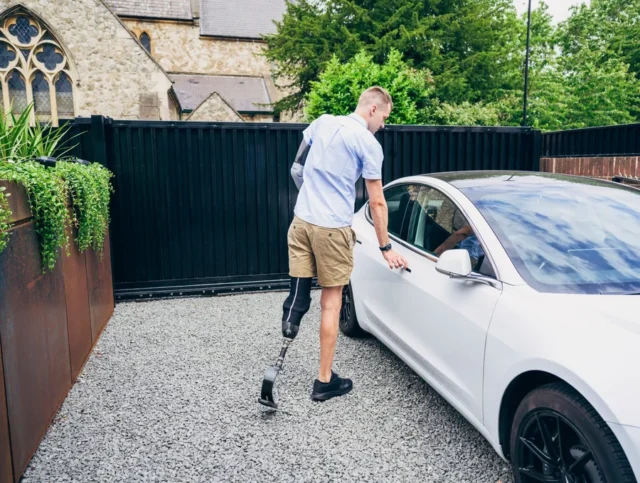Driving After a Brain Injury
Suffering a brain injury can be a life-altering event. One of the many aspects it can impact is the ability to drive.
Understanding brain injury and driving
The process of getting back behind the wheel and resuming driving can be complicated, as it involves assessing one’s own abilities, meeting legal requirements and ensuring personal and public safety.
A brain injury can cause cognitive, physical and emotional changes that can impact the ability to drive safely. These may include memory problems, slowed reaction times, difficulty with coordination or changes in personality and emotional regulation. All of which can make brain injury and driving a serious concern.
However, not all brain injuries affect driving skills to the same degree. The impact varies greatly depending on the severity of the injury, the area of the brain affected and the individual’s recovery progress. Some people may return to driving relatively soon after their injury, while others may need to abstain for a longer period, or even indefinitely.
Assessment for driving fitness
Before returning to driving after a brain injury, it’s essential to have an accurate assessment of your physical, cognitive and emotional abilities.
This is usually a two-part process. The first part involves an assessment by your medical team, which may include a neurologist, occupational therapist or other healthcare professionals familiar with your case.
They will evaluate your vision, coordination, concentration, judgement and reaction times. They may also use specific tools or tests designed to assess your fitness to drive. They can advise on whether it’s safe to consider driving again and can suggest strategies for managing any ongoing difficulties.
The second part of the assessment is an on-road evaluation, typically conducted by a qualified driving instructor. This offers the chance to evaluate your driving in a real-world situation, providing a practical understanding of your skills and abilities.
Legal obligations and guidelines
Under UK law, it is required that any driver who has had a brain injury informs the DVLA (DVA in Northern Ireland). In consultation with your medical team, they will review your case and decide if you can continue to hold a driving licence.
If you are permitted to drive, you may be issued a licence for a set period, after which you will need to be reassessed. This ensures ongoing monitoring of your ability to drive safely. It’s essential to understand that failure to notify the DVLA or DVA about a brain injury can result in a fine and may also affect your
Navigating the road to recovery
Following the assessment, you may be allowed to return to driving, possibly with some restrictions or requirements for additional driving aids. Alternatively, you may be advised to refrain from driving for a period or indefinitely. It’s important to respect this advice, as driving when unfit can have serious consequences.
Remember that many people successfully return to driving after brain injuries, often with the help of therapy or vehicle adaptations. It should also be noted that driving is just one form of transport. If driving is not currently feasible, there are many alternative transport options available, from public transport to cycling or walking.
Conclusion
Driving after a brain injury is a complex process that requires careful assessment and a clear understanding of the potential challenges.
However, with the right support and advice, many individuals can return to the road safely and confidently. Always consult with your healthcare team and follow their advice, as well as your legal obligations, to ensure the best possible outcome.
More like this

Accessible travel
The Best Cars Currently Available On The Motability Scheme
The Motability Scheme is fantastic for disabled people, providing them with the opportunity to lease a brand-new car using their qualifying Mobility Allowance. With so many…

Accessible travel
The Future of Electric WAVs: Overcoming Challenges & Embracing Accessibility
Discover the challenges of Electric Wheelchair Accessible Vehicles (eWAVs) and how our innovative adaptations are paving the way for accessible EVs today. Explore our insights into…

Driving with adaptations
Cost-Effective and Reliable Driving Aids for Amputees: Our Recommendations
Life after limb loss and amputation doesn’t have to mean the end of driving. Although it can affect your mobility and driving ability, there are a…